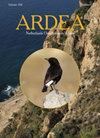Birds and Bush Fires in African Savannahs
IF 0.8
4区 生物学
Q3 ORNITHOLOGY
引用次数: 3
Abstract
Bush fires are widespread in African savannahs. Their impact on birds varies. Many insectivores temporarily profit from the insects escaping fire and smoke, whereas the burnt-through grass and herb layer facilitates feeding for some ground-foraging bird species. Nevertheless, bush fires have a direct, negative impact on many other ground-foraging birds. The average density of seed-eating birds in humid, African savannahs (annual rainfall >800 mm) was 15.9 birds/ha in unburned savannahs, compared to 3.3 birds/ ha (–72%) in recently burned areas. No such difference was found for insectivorous bird species. Eleven of the 13 common ground-foraging migratory bird species were not affected by bush fires in Africa because they spend the northern winter in the arid and semiarid zone, beyond the main bush-fire zone. In the long run, savannah-inhabitant birds profit from bush fires, simply because fires prevent open landscape from becoming overgrown with trees. However, the short-term implications of bush fires might be severe for seed-eating birds that rely on humid savannah, because of the more than 3 million km2 in Africa burned annually, most comprises humid savannah.非洲草原上的鸟类和丛林大火
丛林大火在非洲大草原上蔓延。它们对鸟类的影响各不相同。许多食虫动物暂时从逃离火灾和烟雾的昆虫中获利,而被烧毁的草和草本层有助于为一些地面觅食的鸟类提供食物。然而,丛林大火对许多其他地面觅食鸟类有着直接、负面的影响。在潮湿的非洲大草原(年降雨量>800毫米),以种子为食的鸟类的平均密度在未燃烧的大草原为15.9只/公顷,而在最近燃烧的地区为3.3只/公顷(–72%)。食虫鸟类没有发现这种差异。13种常见的地面觅食候鸟中有11种没有受到非洲丛林大火的影响,因为它们在主要丛林大火区之外的干旱和半干旱区度过了北方的冬天。从长远来看,热带草原上的鸟类从丛林大火中获利,仅仅是因为大火阻止了开阔的景观变得树木丛生。然而,丛林大火的短期影响可能对依赖潮湿热带草原的食籽鸟类造成严重影响,因为非洲每年有300多万平方公里的面积被烧毁,其中大部分是潮湿的热带草原。
本文章由计算机程序翻译,如有差异,请以英文原文为准。
求助全文
约1分钟内获得全文
求助全文
来源期刊

Ardea
生物-鸟类学
CiteScore
2.10
自引率
0.00%
发文量
49
审稿时长
>12 weeks
期刊介绍:
Ardea is the scientific journal of the Netherlands Ornithologists'' Union, and is published since 1912. The journal welcomes manuscripts reporting significant new findings in ornithology, in particular those covering the ecology, life history, and evolution of birds, and including sound descriptive work. Ardea publishes Original research papers, Short notes and Book reviews. In addition to the regular three issues per year, Ardea publishes specials that contain conference or workshop proceedings (produced on request).
 求助内容:
求助内容: 应助结果提醒方式:
应助结果提醒方式:


